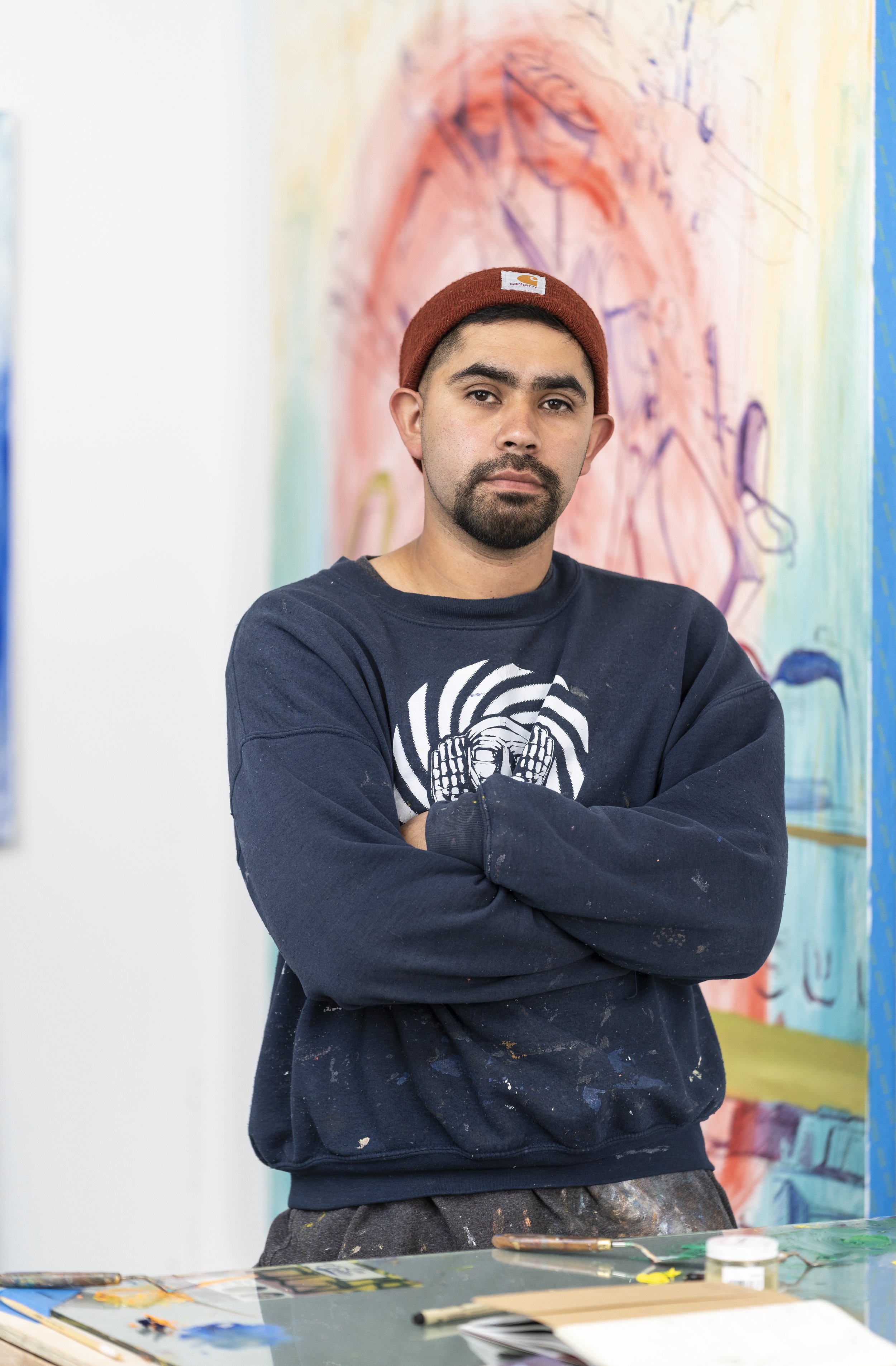Bio
Elmer Guevara (b.1990) was born and raised in Los Angeles and is currently working bicoastally in New York City. In the 1980s, his parents fled a war-torn El Salvador finding refuge in the City of Angels. Along with South Central’s vibrant energy and the culture his parents brought with them, he became inspired to reflect on his upbringing and the hybridity of cultures. He often constructs narratives by sampling family photos from his youth, reframing compositions that form dialogue about identity and concepts of inter-generational trauma.
Furthermore, he depicts observations from his own and neighboring immigrant families, who dealt with issues of marginalization. Through his teenage years he met with friends, commuting throughout the city on public transit becoming obsessed with exploring the city’s crevices favoring the late nights to paint on walls and highways. This obsession later opened an appreciation for painting and an education in the arts. In 2017, he received a BFA in Drawing and Painting from Cal State University Long Beach and in 2022 an MFA at Hunter College in New York City.
Artist’s Statement
Guevara’s motivation is piecing together the experience of war his parents endured through the 1980s in El Salvador and their struggles of migrating and adapting to Los Angeles. To these experiences, he includes his own narratives of his upbringing which come from reminiscing some instances that have been dreadful but also some that share joy. He reconstructs the narratives to document and grasp an understanding of the agony that has shaped his parent’s being and what part of those memories have come into making his identity.
His main concern involves the subject of inherited trauma and the challenges of visually expressing this psychological concept. To evoke a sense of narrative, he expands the use of multiple depictive modes to show the complexity inherited in the subject matter via portraiture and indexical signs. He manipulates family images and reconstructs memories of the past and merges them with current experiences. Often the imagery within the figure functions as a vessel holding visual traces suggesting past forms that transition into the present. He renders space both interior and exterior to address the environments of origin and, partly by analogy, also depict psychological spaces that interweave from one concept to another.
Elmer Guevara
